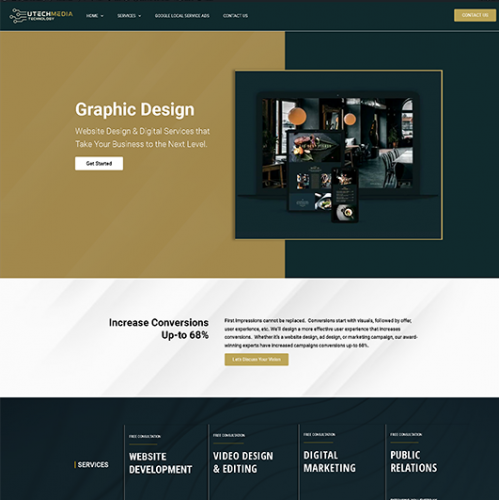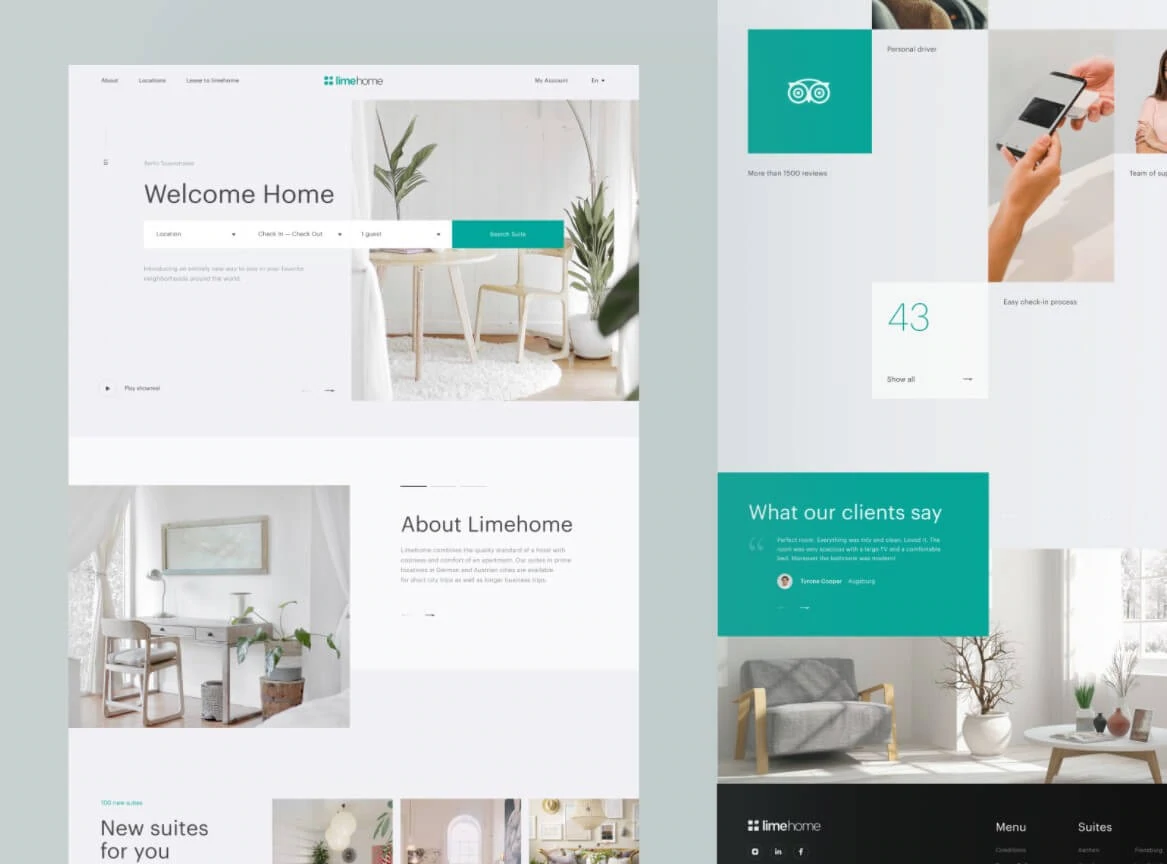Necessary Principles of Web Site Style: Developing User-Friendly Experiences
In the world of internet site layout, the production of straightforward experiences is not just an aesthetic pursuit but a fundamental need. Essential principles such as user-centered layout, instinctive navigating, and ease of access function as the backbone of efficient electronic platforms. By focusing on customer demands and choices, designers can foster engagement and complete satisfaction, yet the implications of these principles expand past simple performance. Understanding how they link can significantly influence a website's general effectiveness and success, prompting a more detailed exam of their specific duties and cumulative influence on individual experience.

Importance of User-Centered Design
Focusing on user-centered style is necessary for producing effective websites that fulfill the needs of their target market. This method places the customer at the leading edge of the design procedure, guaranteeing that the website not just works well yet likewise resonates with individuals on a personal degree. By understanding the customers' actions, objectives, and preferences, designers can craft experiences that cultivate interaction and satisfaction.

In addition, embracing a user-centered design philosophy can bring about enhanced ease of access and inclusivity, catering to a varied audience. By considering numerous customer demographics, such as age, technological efficiency, and cultural histories, developers can produce sites that are inviting and practical for all.
Ultimately, prioritizing user-centered design not just enhances customer experience however can additionally drive essential organization results, such as increased conversion prices and customer commitment. In today's competitive digital landscape, understanding and prioritizing customer requirements is a crucial success factor.
Instinctive Navigation Structures
Efficient site navigation is usually a crucial factor in enhancing user experience. Intuitive navigation frameworks enable users to discover info promptly and successfully, decreasing frustration and boosting engagement.
To develop intuitive navigation, developers ought to focus on clarity. Labels must be acquainted and detailed to individuals, preventing jargon or uncertain terms. A hierarchical structure, with main categories causing subcategories, can better aid customers in recognizing the connection in between various sections of the site.
Furthermore, incorporating visual hints such as breadcrumbs can guide individuals with their navigation course, enabling them to conveniently backtrack if required. The addition of a search bar also improves navigability, granting customers direct accessibility to content without needing to navigate via multiple layers.
Responsive and Flexible Layouts
In today's digital landscape, ensuring that web sites function effortlessly across different tools is necessary for user satisfaction - Website Design. Responsive and flexible designs are 2 crucial methods that allow this capability, dealing with the varied series of screen sizes and resolutions that customers may come across
Responsive designs utilize liquid grids and flexible photos, allowing the web site to automatically change its elements based on the display measurements. This technique provides a constant experience, where content reflows dynamically to fit the viewport, which is particularly valuable for mobile individuals. By using CSS media queries, developers can create breakpoints that optimize the layout for different devices without the need for separate designs.
Adaptive layouts, on the other hand, utilize predefined layouts for particular screen sizes. When a user accesses the site, the server discovers the tool and offers the ideal format, making certain an optimized experience for varying resolutions. This can result in quicker packing times and enhanced performance, as why not try here each layout is customized to the tool's abilities.
Both flexible and responsive designs are vital for boosting individual interaction and contentment, inevitably adding to the site's overall effectiveness in meeting its purposes.
Constant Visual Pecking Order
Establishing a regular aesthetic pecking order is critical view for directing users via a web site's material. This principle makes certain that details is provided in a manner that is both intuitive and interesting, allowing individuals to easily browse and comprehend the material. A well-defined power structure utilizes numerous layout components, such as size, spacing, comparison, and color, to develop a clear distinction in between different kinds of material.

In addition, regular application of these visual signs throughout the site cultivates knowledge and trust fund. Individuals can quickly find out to acknowledge patterns, making their interactions extra effective. Ultimately, a solid visual hierarchy not just boosts customer experience but additionally improves general website usability, motivating much deeper engagement and assisting in the desired actions on a web site.
Accessibility for All Individuals
Access for all users is an essential element of website design that makes sure every person, despite their capabilities or specials needs, can involve with and take advantage of on-line web content. Designing with ease of access in mind includes carrying out techniques that accommodate diverse user requirements, such as those with visual, acoustic, electric motor, or cognitive problems.
One essential standard is to follow the Internet Content Ease Of Access Standards (WCAG), which give a framework for producing obtainable digital experiences. This includes using sufficient color contrast, supplying text choices for images, and guaranteeing that navigation is keyboard-friendly. In addition, using responsive style methods makes certain that websites function successfully throughout various gadgets and screen sizes, further boosting accessibility.
Another vital aspect is making use of clear, concise language that prevents lingo, making content comprehensible for all individuals. Engaging individuals with assistive modern technologies, such as display readers, calls for cautious interest to HTML this article semiotics and ARIA (Available Abundant Net Applications) duties.
Eventually, focusing on access not just fulfills lawful responsibilities but additionally broadens the audience reach, cultivating inclusivity and improving customer satisfaction. A dedication to accessibility shows a dedication to developing equitable electronic atmospheres for all users.
Final Thought
To conclude, the crucial principles of internet site design-- user-centered style, instinctive navigation, responsive formats, consistent visual power structure, and ease of access-- jointly add to the development of straightforward experiences. Website Design. By prioritizing customer demands and guaranteeing that all people can efficiently involve with the website, developers boost functionality and foster inclusivity. These principles not just enhance customer contentment yet likewise drive favorable business results, ultimately showing the critical importance of thoughtful web site style in today's electronic landscape
These techniques provide invaluable understandings right into user assumptions and pain factors, enabling designers to customize the website's features and material as necessary.Reliable internet site navigating is usually a crucial element in enhancing user experience.Establishing a regular aesthetic power structure is crucial for leading customers via a website's content. Ultimately, a strong visual hierarchy not only improves individual experience but additionally boosts general site usability, urging deeper interaction and helping with the desired actions on a website.
These concepts not only improve customer satisfaction yet likewise drive positive organization end results, eventually showing the important value of thoughtful web site design in today's digital landscape.